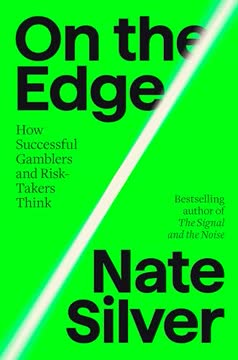முக்கியமான எடுத்துக்காட்டுகள்
1. பொறுப்புக் குழிகள்: நவீன அமைப்புகள் பொறுப்பைத் தவிர்க்கும் விதம்
ஒரு அமைப்பின் நோக்கம் அதனால் செய்யப்படும் செயல்களில் வெளிப்படுகிறது.
எதிர்பாராத விளைவுகள். நவீன நிறுவனங்கள் பெரும்பாலும் "பொறுப்புக் குழிகள்" என்ற அமைப்புகளை உருவாக்குகின்றன. இவை தனிப்பட்ட நபர்களுக்கு பொறுப்பை ஒதுக்காமல், பொறுப்பை உறிஞ்சிக் கொள்கின்றன. இதுபோன்ற நிகழ்வுகள் நிறுவன மேலாண்மை அமைப்புகள், அரசாங்க அலுவலகங்கள் மற்றும் தானாக இயங்கும் முடிவெடுக்கும் அமைப்புகளில் காணப்படுகின்றன. இவை அதிகரிக்கும் சிக்கல்களுக்கும், எதிர்மறை விளைவுகளுக்கான தனிப்பட்ட குற்றச்சாட்டைத் தவிர்க்கும் விருப்பத்திற்கும் பதிலாக உருவாகின்றன.
உதாரணங்கள் மற்றும் விளைவுகள்:
- முடிவெடுப்பவர்களுடன் நேரடி தொடர்பை தடுக்கும் நிறுவனக் கொள்கைகள்
- மனிதர்களின் குறைந்த தலையீட்டுடன் இயங்கும் தானியங்கி வாடிக்கையாளர் சேவை அமைப்புகள்
- ஒரே நேரத்தில் பல அதிகாரப்பூர்வ பகுதிகள் மற்றும் தெளிவற்ற பொறுப்புக் கோடுகள் கொண்ட அரசு முகாமைகள்
பொறுப்புக் குழிகளின் பரவல் தனிநபர்களுக்கு அதிகாரமின்மையையும், நிறுவனங்களில் நம்பிக்கை இழப்பையும் ஏற்படுத்தியுள்ளது. அமைப்புகள் அதிக சிக்கலானதாக மாறும் போது, பிரச்சனைகளின் அடிப்படை காரணங்களை கண்டறிந்து தீர்க்குவது கடினமாகிறது.
2. சைபர்நெட்டிக்ஸ் வளர்ச்சி: சிக்கலான முடிவெடுக்கும் அமைப்புகளை புரிந்துகொள்வது
சிக்கலான அமைப்புகளை தனித்தனியான பின்னூட்டச் சுற்றுகளின் தொகுப்பாக அல்ல, முழுமையாகவே அணுக வேண்டும்.
அமைப்பு சிந்தனை. சைபர்நெட்டிக்ஸ் என்பது சிக்கலான அமைப்புகளில் கட்டுப்பாடு மற்றும் தகவல் பரிமாற்றத்தை ஆய்வு செய்யும் துறை. நோர்பர்ட் வியனர் மற்றும் ஸ்டாஃபோர்ட் பியர் போன்ற முன்னோடிகள் இதை முன்னெடுத்து, பின்னூட்டச் சுற்றுகள், தகவல் ஓட்டம் மற்றும் தழுவல் நடத்தை ஆகியவற்றின் முக்கியத்துவத்தை வலியுறுத்தினர்.
சைபர்நெட்டிக்ஸின் முக்கியக் கருத்துக்கள்:
- கருப்பு பெட்டி சிந்தனை: உள்ளக செயல்பாடுகளைப் பார்க்காமல் உள்ளீடுகள் மற்றும் வெளியீடுகளைக் கவனித்தல்
- வகை பொறியியல்: தகவலை வடிகட்டி பெருக்கி சிக்கலை நிர்வகித்தல்
- உயிருள்ள அமைப்பு மாதிரி: திறமையான நிறுவனங்களை வடிவமைக்கும் கட்டமைப்பு
சைபர்நெட்டிக்ஸ் கோட்பாடுகள் வணிக மேலாண்மை முதல் அரசாங்கக் கொள்கை வரை பல துறைகளில் பயன்படுத்தப்படலாம், மேலும் தழுவல் மற்றும் தழுவல் திறன் கொண்ட அமைப்புகளை உருவாக்க உதவுகின்றன.
3. பொருளாதாரத்தின் கண்ணுக்குக் காட்சியில்லாத இடங்கள்: சந்தை மையமான சிந்தனையின் வரம்புகள்
பொருளாதாரவியலாளர்கள் இந்த பிரச்சனையை மறுத்து தீர்த்தனர்.
அதிக எளிமைப்படுத்தல். பொதுவான பொருளாதாரம் பெரும்பாலும் எளிமையான கருதுகோள்கள் மற்றும் மாதிரிகளைப் பயன்படுத்தி, உண்மையான உலகின் முழுமையான சிக்கல்களைப் பிடிக்க முடியாமல் தவறுகிறது. இதனால் பொருளாதார சிந்தனையில் சில கண்ணுக்குக் காட்சியில்லாத இடங்கள் உருவாகின்றன, குறிப்பாக:
- காலம் மற்றும் அநிச்சயத்தன்மை: சிக்கலான எதிர்கால நிலைகளை எளிய சாத்தியக்கூறுகளாக மாற்றுதல்
- சந்தை அல்லாத தொடர்புகள்: சமூக உறவுகள் மற்றும் பணமில்லா பரிமாற்றங்களை குறைவாக மதிப்பீடு செய்தல்
- அமைப்பு சார்ந்த ஆபத்துகள்: நிதி அமைப்புகளில் இணைந்துள்ள பாதிப்புகளை கணக்கில் எடுக்காமை
இந்த வரம்புகள் கொள்கை தோல்விகள் மற்றும் பொருளாதார நெருக்கடிகளுக்கு வழிவகுத்துள்ளன, ஏனெனில் முடிவெடுப்பவர்கள் பொருளாதார செயல்பாடுகளை முழுமையாகப் புரிந்துகொள்ளாத மாதிரிகளை நம்புகின்றனர்.
4. ஃபிரிட்மேன் கொள்கை: பங்குதாரர் மதிப்பும் அதன் விளைவுகளும்
நீங்கள் இவ்வளவு புத்திசாலி என்றால், ஏன் பணக்காரர் அல்ல?
குறுகியகால சிந்தனை. மில்டன் ஃபிரிட்மேன் வியாதி, வணிகத்தின் ஒரே பொறுப்பு லாபத்தை அதிகரிப்பதாகும், பெரும் தாக்கத்தை ஏற்படுத்தியுள்ளது. 1970 மற்றும் 1980களில் பிரபலமான இந்த கொள்கை:
- நீண்டகால நிலைத்தன்மையை புறக்கணித்து குறுகியகால நிதி அளவுகோல்களில் கவனம் செலுத்துதல்
- நிர்வாகிகளுக்கான பங்கு விருப்பங்கள் மற்றும் செயல்திறன் அடிப்படையிலான ஊதியத்தை அதிகரித்தல்
- செலவுகளை குறைத்து முக்கியமற்ற பணிகளை வெளிப்புறமாக மாற்ற அழுத்தம்
பங்குதாரர் மதிப்பை முன்னிறுத்துதல் சமத்துவம் குறைவு, வேலை பாதுகாப்பு இழப்பு மற்றும் சமூக பொறுப்பில் குறைவு போன்ற விளைவுகளை ஏற்படுத்தியுள்ளது.
5. நிதியியல் மற்றும் கடன்: நவீன மூலதனவாதத்தில் கட்டுப்பாட்டு கருவிகள்
கடன் கட்டுப்பாட்டு கருவியாக மாறுகிறது.
ஏற்றுமதி மற்றும் ஆபத்து. பொருளாதாரத்தின் அதிக நிதியியல் காரணமாக கடன் கட்டுப்பாடு மற்றும் லாபம் பெறும் சக்திவாய்ந்த கருவியாக மாறியுள்ளது. இதன் வெளிப்பாடுகள்:
- கடன் மூலம் நிறுவனங்களை வாங்கி மறுசீரமைத்தல் (லெவரேஜ் பைய்அவுட்கள் மற்றும் தனியார் பங்கு முதலீடு)
- நுகர்வோர் கடன்: நுகர்வோர், கல்வி மற்றும் வீடு வாங்க கடன் எடுக்க ஊக்குவித்தல்
- தேசிய கடன்: சர்வதேச கடன் மூலம் தேசிய கொள்கைகளை பாதித்தல்
கடன் பரவல் பொருளாதார அமைப்புகளில் ஆபத்துகளை அதிகரித்து, கடனாளிகள் மற்றும் கடனுதாரர்களுக்கு இடையேயான அதிகார சமநிலையை மாற்றியுள்ளது, பெரும்பாலும் தொழிலாளர்கள் மற்றும் சமூகங்களுக்கு தீங்கு விளைவிக்கிறது.
6. நிறுவனங்களின் மூளை இழப்பு: வெளிப்புற ஒப்பந்தம் மற்றும் அறிவாற்றல் இழப்பு
நிறுவனங்கள் மாயை காணத் தொடங்கின.
நிறுவன நினைவிழப்பு. செலவு குறைத்தல் மற்றும் வெளிப்புற ஒப்பந்தம் போக்குகள் பல நிறுவனங்களில் உள்ளக அறிவும் முடிவெடுக்கும் திறனும் இழப்புக்கு உள்ளாக்கியுள்ளது. இந்த "மூளை இழப்பு" பல விளைவுகளை ஏற்படுத்துகிறது:
- சிக்கலான சவால்களுக்கு பதிலளிக்கும் திறன் குறைவு
- நிறுவன நினைவும் நிபுணத்துவமும் இழப்பு
- வெளிப்புற ஆலோசகர்கள் மற்றும் தற்காலிக பணியாளர்களுக்கு அதிக நம்பிக்கை
நிறுவன அறிவின் வெறுமை நிறுவனங்களை இடையூறுகளுக்கு ஆளாக்கி, நீண்டகாலத் திட்டமிடலில் குறைபாடுகளை ஏற்படுத்தியுள்ளது.
7. பலசிக்கல்: பொருளாதார нестабильность மற்றும் மக்கள் எதிர்ப்பு
ஐர்லாந்தில் அனைவருக்கும் ஒரு சிறிய ஞானி முதியவர் பணத்தை நிர்வகிக்கிறார் என்று எண்ணம் இருந்தது... அவரை பார்த்ததும், "அவர் பணத்தை நிர்வகிப்பவரா?" என்று அனைவரும் பதறினர்.
அமைப்பு தோல்விகள். பல நெருக்கடிகள் - நிதி, சுற்றுச்சூழல், சமூக மற்றும் அரசியல் - ஒருங்கிணைந்த போது, தற்போதைய அமைப்புகளின் பலவீனத்தை வெளிப்படுத்தியுள்ளது. இந்த "பலசிக்கல்" காரணமாக:
- பொருளாதார அநிச்சயத்தன்மை மற்றும் சமத்துவம் குறைவு
- பாரம்பரிய அரசியல் மற்றும் பொருளாதார முன்னணிகளுக்கு நம்பிக்கை இழப்பு
- மக்கள் இயக்கங்கள் மற்றும் எதிர்க்கட்சித் தோற்றம்
இவை தொடர்புடைய சவால்களை சமாளிக்க இயலாததால், சமூக மாற்றம் மற்றும் கலவரத்திற்கு வழிவகுத்துள்ளது.
8. நோக்கத்தை மறுபரிசீலனை: லாப அதிகரிப்பைத் தாண்டி
வணிகங்கள் கலைஞர்களைப் போல இருக்க வேண்டும், காகித கிளிப்புகளை அதிகரிப்பவர்களாக அல்ல.
முழுமையான மதிப்பீடு. ஒரே நோக்கமாக லாபத்தை அதிகரிப்பதை விட்டு விட்டு, நிறுவன நோக்கத்தை விரிவாகப் புரிந்துகொள்ள வேண்டும். இதன் பொருள்:
- பல பங்குதாரர்களை கருத்தில் கொள்ளுதல்: ஊழியர்கள், சமூகங்கள், சுற்றுச்சூழல் மற்றும் பங்குதாரர்கள்
- சிக்கல்களை ஏற்றுக்கொள்வது: ஒரே நேரத்தில் பல, சில நேரங்களில் முரண்பட்ட இலக்குகளை ஏற்றுக்கொள்வது
- குறுகியகால நிதி அளவுகோல்களைவிட நீண்டகால நிலைத்தன்மையை முன்னிறுத்துதல்
இவ்வாறு முழுமையான நோக்கத்தை ஏற்றுக்கொள்வதன் மூலம், நிறுவனங்கள் சமூக தேவைகளுடன் சிறந்த ஒத்துழைப்பை ஏற்படுத்தி, நிலைத்தன்மையான மதிப்பை உருவாக்க முடியும்.
9. சமநிலையை மீட்டெடுக்கும் முயற்சி: சமூகத்தில் வகை முரண்பாடுகளை சமாளித்தல்
ஒரு பிரச்சனை அமைப்புக்குள் இருப்பதாக அறிவது, அதன் சிக்கலின் மூலமும் அந்த அமைப்பில் உள்ள மனிதர்களே என்பதைக் குறிக்கிறது. அதனால், அந்த மனிதர்களுக்கு பிரச்சனையின் சிக்கலுக்கு ஏற்ப வகை மற்றும் திறன் இருக்க வேண்டும்.
தழுவல் அமைப்புகள். அதிகரிக்கும் சிக்கல் மற்றும் அமைப்பு நிலைத்தன்மை குறைபாடுகளை சமாளிக்க, நாம் தழுவல் மற்றும் தழுவல் திறன் கொண்ட சமூக அமைப்புகளை உருவாக்க வேண்டும். இதற்கான வழிகள்:
- முடிவெடுப்பவர்களுக்கும் பாதிக்கப்பட்டவர்களுக்கும் இடையேயான தொடர்பு வழிகளை மீட்டெடுப்பது
- நிறுவன கட்டமைப்புகளில் மீளமைப்பு மற்றும் பல்வகைமை சேர்த்தல்
- கடுமையான திட்டமிடலைவிட அநிச்சயத்தன்மை மற்றும் பரிசோதனையை ஏற்றுக்கொள்வது
மனித அமைப்புகளின் இயல்பான சிக்கல்களை உணர்ந்து, மாற்றங்களுக்கு ஏற்ப தழுவும் நிறுவனங்களை வடிவமைப்பதன் மூலம், நாம் ஒரு நிலையான மற்றும் சமநிலை சமூகத்தை உருவாக்க முடியும்.
கடைசியாக புதுப்பிக்கப்பட்டது:
FAQ
What's The Unaccountability Machine about?
- Focus on Decision-Making Systems: The book examines how large systems and organizations make decisions, often resulting in poor outcomes due to diminished accountability.
- Historical Context: It traces the evolution of decision-making from individual accountability to systemic processes, highlighting key historical events and figures.
- Consequences of Complexity: As systems grow more complex, they become less accountable, leading to a disconnect between decision-makers and those affected by their decisions.
Why should I read The Unaccountability Machine?
- Insight into Modern Systems: The book provides a critical examination of how modern organizations operate, relevant for those interested in management, economics, or political science.
- Understanding Accountability: It offers a framework for understanding the decline of accountability in decision-making, crucial for navigating today’s complex organizational landscapes.
- Practical Applications: Readers can apply concepts like management cybernetics and the viable system model to improve decision-making processes in their own organizations.
What are the key takeaways of The Unaccountability Machine?
- Systems Over Individuals: Decisions are increasingly made by systems rather than individuals, leading to a lack of accountability with profound implications for governance and management.
- The Viable System Model: Introduces Stafford Beer’s model, outlining five essential functions for effective organizational management: operations, regulation, integration, intelligence, and identity.
- Red Flags in Organizations: Discusses "algedonic signals," or red-handle signals, indicating when a system is in crisis and requires immediate attention.
What is the viable system model mentioned in The Unaccountability Machine?
- Five Core Functions: The model consists of operations, regulation, integration, intelligence, and identity, each playing a critical role in maintaining organizational viability.
- Matching Variety: Emphasizes that a system's environment variety must be matched by its regulatory functions to ensure stability and adaptability.
- Application in Organizations: Used to analyze and improve organizational structures, ensuring each part of the system can handle complexities.
What does Dan Davies mean by "accountability sinks" in The Unaccountability Machine?
- Definition of Accountability Sinks: Mechanisms within organizations that absorb responsibility, making it difficult to attribute blame for poor decisions.
- Impact on Decision-Making: Leads to a culture where decisions are made without clear accountability, resulting in systemic failures.
- Examples in Practice: Illustrated with real-world examples, such as the KLM squirrel incident, where a lack of accountability led to a tragic outcome.
What are the pathologies of decision-making systems discussed in The Unaccountability Machine?
- Self-Organizing Control Fraud: Organizations can develop systems that inherently promote fraudulent behavior without direct intent from individuals.
- Complexity and Miscommunication: Complex systems can lead to miscommunication and misunderstandings, resulting in decisions that do not reflect stakeholders' best interests.
- Crisis of Legitimacy: As accountability diminishes, organizations face a crisis of legitimacy, where the public loses trust in their decision-making processes.
How does The Unaccountability Machine critique traditional economic models?
- Focus on Measurement Limitations: Critiques reliance on quantifiable metrics, often ignoring qualitative factors that influence decision-making.
- Oversimplification of Human Behavior: Traditional models reduce human behavior to simplistic assumptions, failing to capture real-life complexities.
- Call for Interdisciplinary Approaches: Suggests integrating insights from psychology and sociology to create a more comprehensive understanding of economic phenomena.
What is the Ricardian Vice mentioned in The Unaccountability Machine?
- Simplification of Economic Models: Refers to the tendency to create overly simplified models that strip away essential complexities of the real world.
- Blind Spots in Decision-Making: This simplification results in blind spots that can cause significant issues in policy-making and economic management.
- Need for a More Nuanced Approach: Advocates for understanding economics that incorporates complexities of human behavior and societal interactions.
How does Dan Davies suggest improving decision-making in organizations?
- Enhancing Accountability Mechanisms: Emphasizes creating robust accountability mechanisms that hold decision-makers responsible for their actions.
- Integrating Diverse Perspectives: Advocates for incorporating diverse perspectives and expertise into decision-making processes.
- Fostering Adaptability: Suggests developing systems that are adaptable and responsive to change, enabling better handling of modern complexities.
What role does measurement play in economics according to The Unaccountability Machine?
- Critical for Assessing Change: Measurement is essential for understanding whether changes have occurred within an economic system.
- Challenges of Quantification: Highlights challenges associated with quantifying aspects of human behavior and societal interactions.
- Need for Comprehensive Metrics: Advocates for metrics that capture both quantitative and qualitative factors for accurate economic performance assessment.
How does The Unaccountability Machine relate to current economic and political issues?
- Relevance to Contemporary Crises: Themes are relevant to current crises, where accountability and decision-making are under scrutiny.
- Critique of Neoliberalism: Critiques the neoliberal economic framework, arguing it has contributed to systemic failures.
- Call for Systemic Change: Emphasizes the need for systemic change in economic and political spheres to address modern challenges.
What are the best quotes from The Unaccountability Machine and what do they mean?
- “The purpose of a system is what it does.”: Emphasizes that an organization's true function is reflected in its actions, not its stated goals.
- “Systems don’t have motivations, so they don’t have hidden motivations.”: Highlights that organizations operate based on structures and processes, obscuring accountability.
- “The extent to which you are able to change a decision is precisely the extent to which you can be accountable for it.”: Suggests that greater control leads to greater responsibility in decision-making.
விமர்சனங்கள்
பொறுப்பில்லாத இயந்திரம் என்ற நூல் பெரும்பாலும் நேர்மறையான விமர்சனங்களைப் பெற்றுள்ளது. நவீன அமைப்புகள் எப்படி பொறுப்புக்களைத் தள்ளிப்போடுகின்றன என்பதைக் கூர்மையான ஆய்வுடன் விளக்குவதற்காக இது பாராட்டப்படுகிறது. சைபர்நெட்டிக்ஸ் என்ற துறையை அறிமுகப்படுத்துவதும், விதிமுறைகளால் கட்டுப்படுத்தப்படும் அமைப்புகள் எப்படி உறுப்பினர்களை பொறுப்பிலிருந்து பாதுகாக்கின்றன என்பதைக் கண்டறிவதிலும் வாசகர்கள் பெருமளவு நன்மை பெற்றுள்ளனர். சிலர் சைபர்நெட்டிக்ஸ் கருத்துக்களைப் புரிந்துகொள்ள சிரமப்படுவதாகவும், மற்றவர்கள் நிறுவன செயலிழப்பை பற்றிய ஆழமான சிந்தனைகளை மதிப்பதாகவும் கூறுகின்றனர். நூலின் நகைச்சுவை மற்றும் ஈர்க்கக்கூடிய எழுத்து முறை சிறப்பாக வெளிப்படுத்தப்பட்டுள்ளன; இருப்பினும் சில விமர்சகர்கள், முழுமையான வாதம் இன்னும் ஒருங்கிணைந்ததாக இருக்க வேண்டியிருந்தது எனக் குறிப்பிட்டுள்ளனர்.
Similar Books














